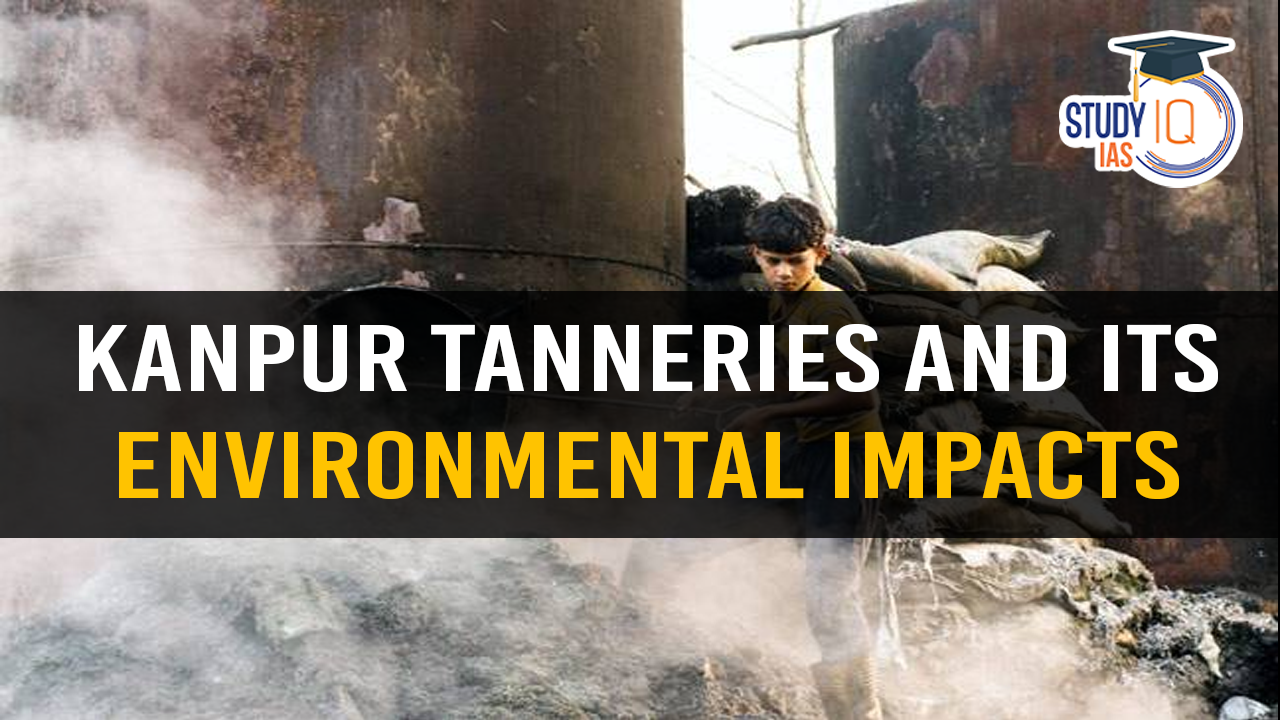Table of Contents
Context: Recently on orders of NGT UP Govt. conducted health checkups of people living in Kanpur & Fatehpur districts to assess the health impacts of pollution caused by tanneries.
Health Impacts of Tanneries
- Tanneries are known for their use of toxic chemicals in the leather processing industry, leading to serious health hazards for workers and nearby residents.
- The medical tests revealed high levels of mercury and chromium in the blood samples of residents, requiring urgent medical intervention.
- The primary pollutants include chromium, mercury, lead, arsenic, sulfur compounds and ammonia.
| Pollutant | Health Impact |
| Hexavalent Chromium (Cr6+) | Causes lung cancer, kidney and liver damage, skin ulcers, and respiratory diseases. |
| Mercury | Leads to neurological disorders, cognitive impairment, and kidney failure. |
| Lead | Causes brain damage, developmental disorders in children, and cardiovascular diseases. |
| Arsenic | Increases risk of skin, lung, and bladder cancers, along with liver diseases |
Environmental Impact of Tanneries
Water Pollution
- Tanneries discharge untreated effluents containing chromium, sulfides, and organic matter into rivers and groundwater.
- Example: Kanpur’s tannery waste pollutes the Ganga River, making water unsafe for drinking, agriculture, and aquatic life.
Soil Contamination
- Chromium and arsenic seep into agricultural fields, making soil toxic and infertile.
- Contaminated crops pose health risks to consumers.
Air Pollution
Tanneries release hydrogen sulfide, ammonia and particulate matter into the air, causing:
- Acid rain (damaging crops and water bodies).
- Respiratory illnesses among nearby populations


 Bioluminescent Beaches - Kavaru
Bioluminescent Beaches - Kavaru
 Malabar Grey Hornbill, Characteristics a...
Malabar Grey Hornbill, Characteristics a...
 Salt Pan Land Cleared for Dharavi Redeve...
Salt Pan Land Cleared for Dharavi Redeve...





















